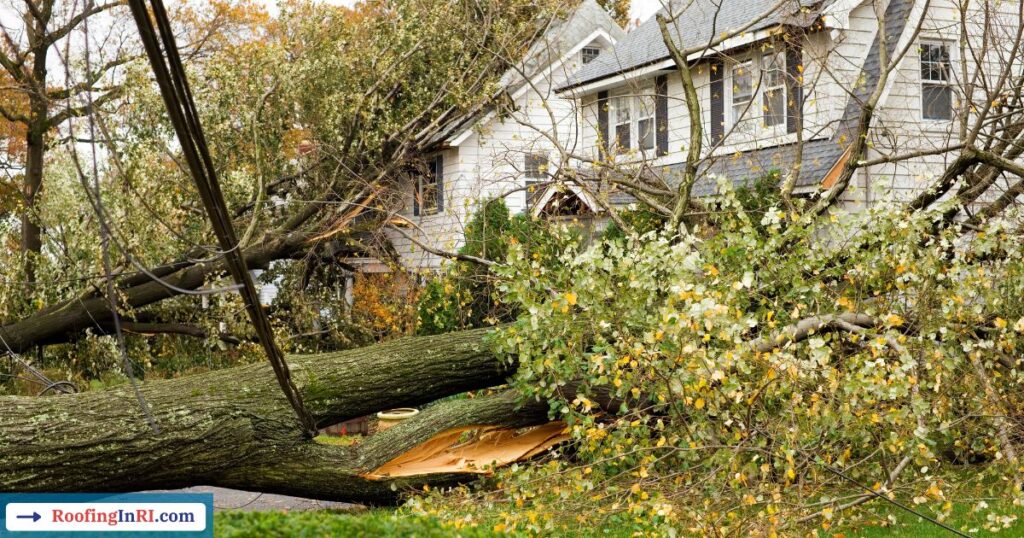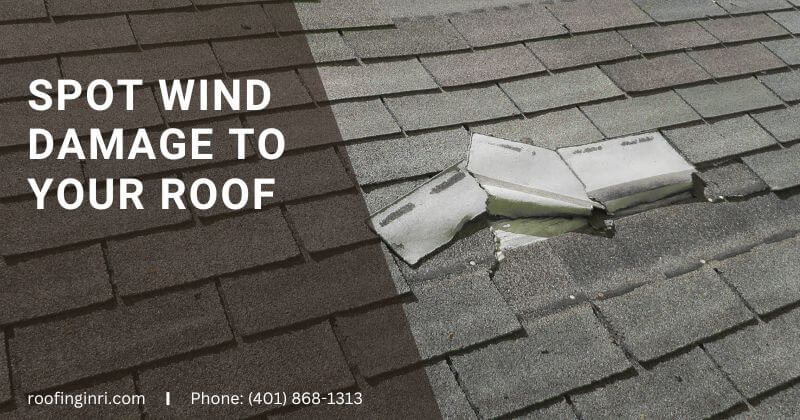New England\’s unique climate makes it prone to various storms throughout the year. From extreme tornadoes and hail storms to powerful thunderstorms and blizzards, the region\’s unpredictable weather can damage homes and properties.
Understanding the types of storms, their timing, and the potential damage can help you better prepare and protect your property.
In this post, I will explain-
- What storm season means for New England residents
- How to mitigate risks to your home, especially your roof.
Whether it\’s preparing for a New England storm or recovering from a winter storm, here\’s everything you need to know.
When is Tornado Season in New England?

Tornadoes in New England are most common between late spring and early summer, particularly from May to July. During this period, warm, moist air from the south collides with cooler, drier air from the north, creating the perfect conditions for severe thunderstorms and, in some cases, tornadoes.
While New England doesn\’t see the same frequency or intensity of tornadoes as the Midwest, the region is not immune. Tornado warnings should always be taken seriously, as even weaker tornadoes can cause significant damage.
Related: How can you claim roofing insurance for storm damage?
Where Do Most Tornadoes Occur in New England?

Tornadoes in New England tend to occur in areas with flat terrain and low-lying valleys, where air masses can interact more freely.
States like Connecticut, Massachusetts, and Rhode Island have the highest tornado activity frequency. Notable tornadoes remind residents of the potential dangers, like the devastating Worcester Tornado of 1953.
Read also: The importance of regular roof inspections after a storm
What Damage is Caused By Tornadoes?
The destructive power of tornadoes is immense. Winds can range from 65 mph in weaker tornadoes to over 200 mph in severe cases. Common types of damage include:
- Roof Damage: Shingles, flashing, and even entire roof structures can be ripped away.
- Debris Damage: Flying debris can puncture walls, windows, and roofs.
- Structural Collapse: In severe tornadoes, entire homes can be destroyed.
Read also: Roof storm damage checklist
Roof Damage Caused by Tornadoes
Roofs are particularly vulnerable during tornadoes due to high winds and debris. Tornadoes can:
- Uplift shingles and flashing.
- Break apart roof trusses.
- Cause water infiltration from exposed areas.
After a tornado, it\’s essential to inspect your roof for damage immediately. Even minor issues, like missing shingles, can damage significantly if not repaired promptly.
Related: The most common types of roof damage you should know about
What Time of Year Does Hail Occur?

Hail storms are most common in New England during late spring and early summer, coinciding with the peak of thunderstorm activity. Hail forms when strong updrafts in a storm carry raindrops into freezing parts of the atmosphere.
Read also: 7 roofing problems are the most common in Rhode Island
How Does Hail Form?
Hailstones develop in thunderstorms when raindrops are carried upward into cold air. As these drops freeze, they form layers of ice, growing larger as they circulate within the storm.
Once the hail becomes too heavy for the updrafts, it falls to the ground, which often causes significant damage.
Read also: How do you spot wind damage to your roof?
Identifying Hail Damage to Your Roof
Hail can severely impact your roof, especially if the hailstones are large. Signs of hail damage include:
- Dents or bruises on shingles.
- Granule loss from asphalt shingles.
- Cracks or punctures in roofing materials.
- Dented metal components like gutters and vents.
After a hail storm, inspect your roof with a professional contractor/roofer to address any damage before it worsens.
Read also: 5 things you need to know about roof inspections for insurance
How Do Severe Thunderstorms & Lightning Develop?
Thunderstorms occur when warm, moist air rises rapidly into cooler air above. This creates instability, resulting in strong winds, heavy rain, hail, and lightning.
There Are Three Stages to a Thunderstorm:
- Cumulus Stage: Warm air rises and condenses into cumulus clouds.
- Mature Stage: The storm peaks, producing heavy rain, lightning, and sometimes hail or tornadoes.
- Dissipating Stage: The storm weakens as downdrafts dominate.
Read also: Replace vs repair a roof: 7 crucial factors to consider before you decide.
What is the Difference Between a Thunderstorm Warning and a Thunderstorm Watch?
- Thunderstorm Watch: Conditions are favorable for a thunderstorm to develop. Stay alert and prepare.
- Thunderstorm Warning: A thunderstorm is occurring or imminent in your area. Take immediate precautions.
Can Thunderstorms Damage Homes?

Thunderstorms can cause a range of damages, including:
- The roof leaks from heavy rain.
- Hail and wind damage to roofing materials.
- Electrical issues or fires from lightning strikes.
- Fallen tree limbs damaging roofs or walls.
Read also: When is the best time to replace a roof?
Snow Storms Can Lead to Roof Leaks
Winter storms are a hallmark of New England weather, often bringing heavy snow, ice, and freezing rain. Snow buildup on roofs can lead to structural stress and leaks.
Related: 7 Main reasons for roof leaks in heavy rain and their solutions
How Ice Dams Form

Ice dams occur when snow on a roof melts and refreezes near the eaves, creating a barrier that traps water. This trapped water can seep under shingles, causing leaks and water damage inside the home.
- Ensure the attic is properly ventilated & insulated.
- Remove excess snow from the roof after heavy storms.
- Use heating cables to prevent ice buildup.
Related: Why do you need an ice and water shield on the roof?
Schedule a Free Property Evaluation After Any Storm
New England storms, such as summer tornados and winter blizzards, can damage your home and roof. After any severe weather event, inspecting your property for hidden damage is essential.
A professional roof inspection can identify issues early, saving you money on future repairs.



